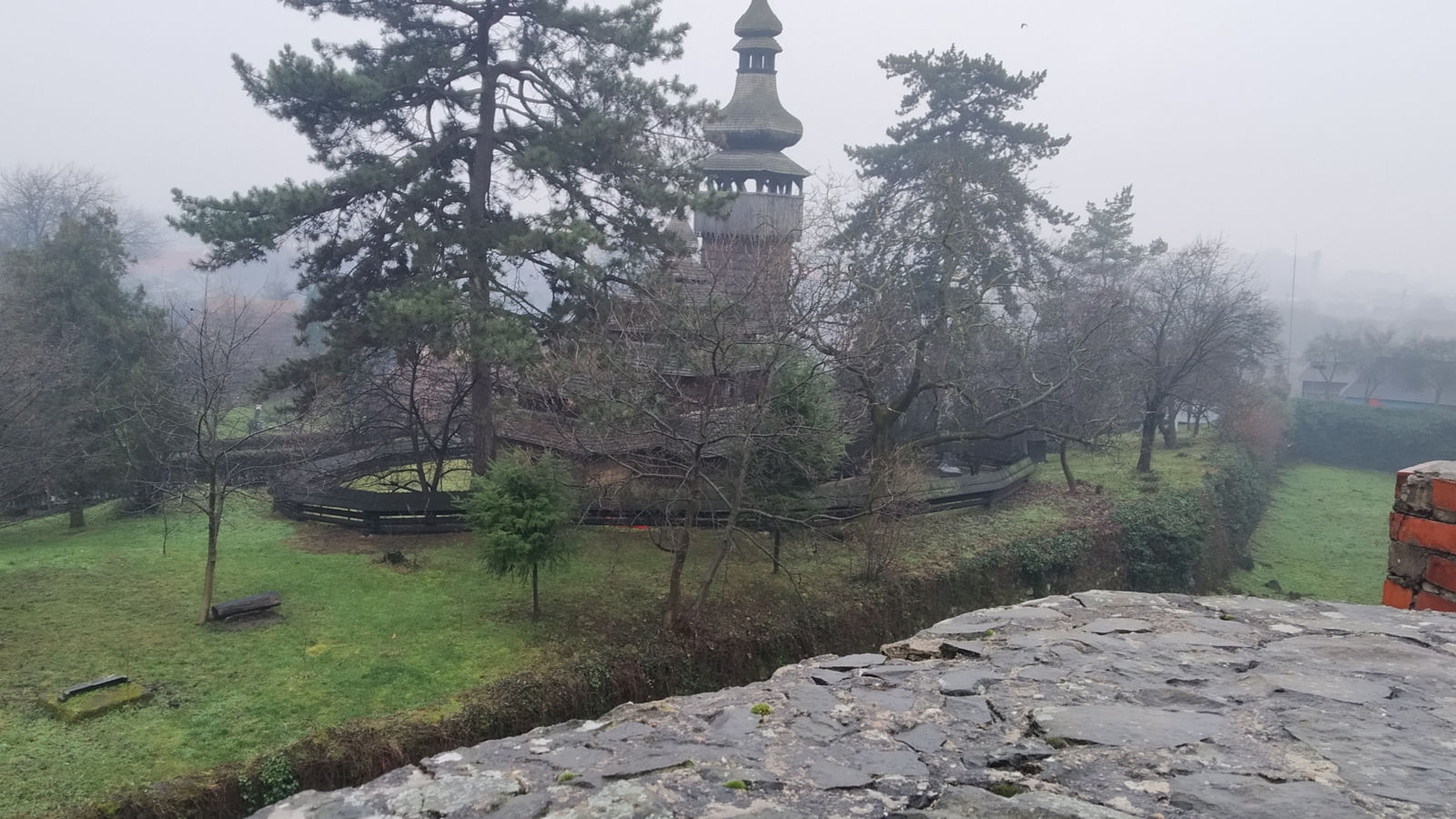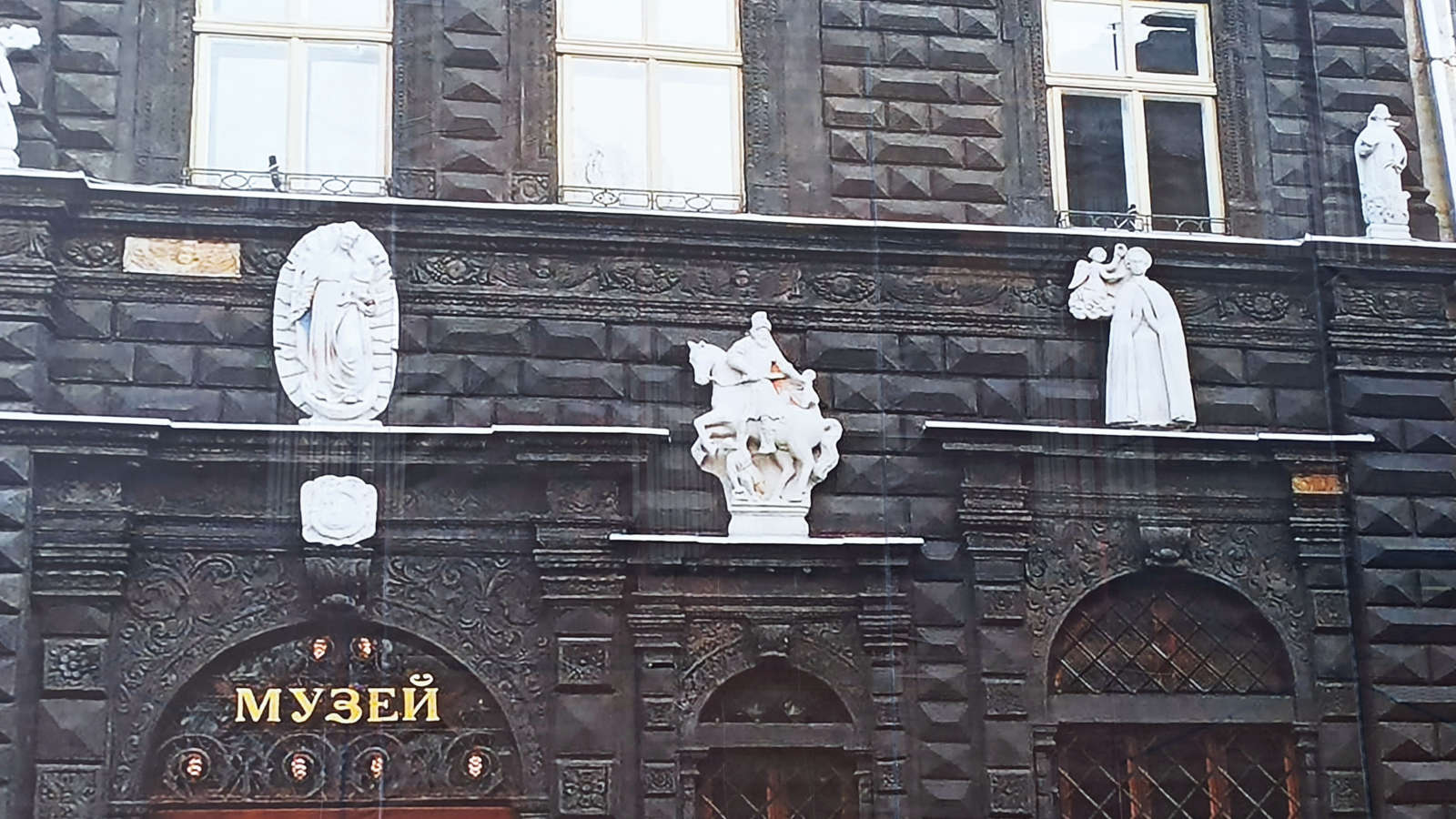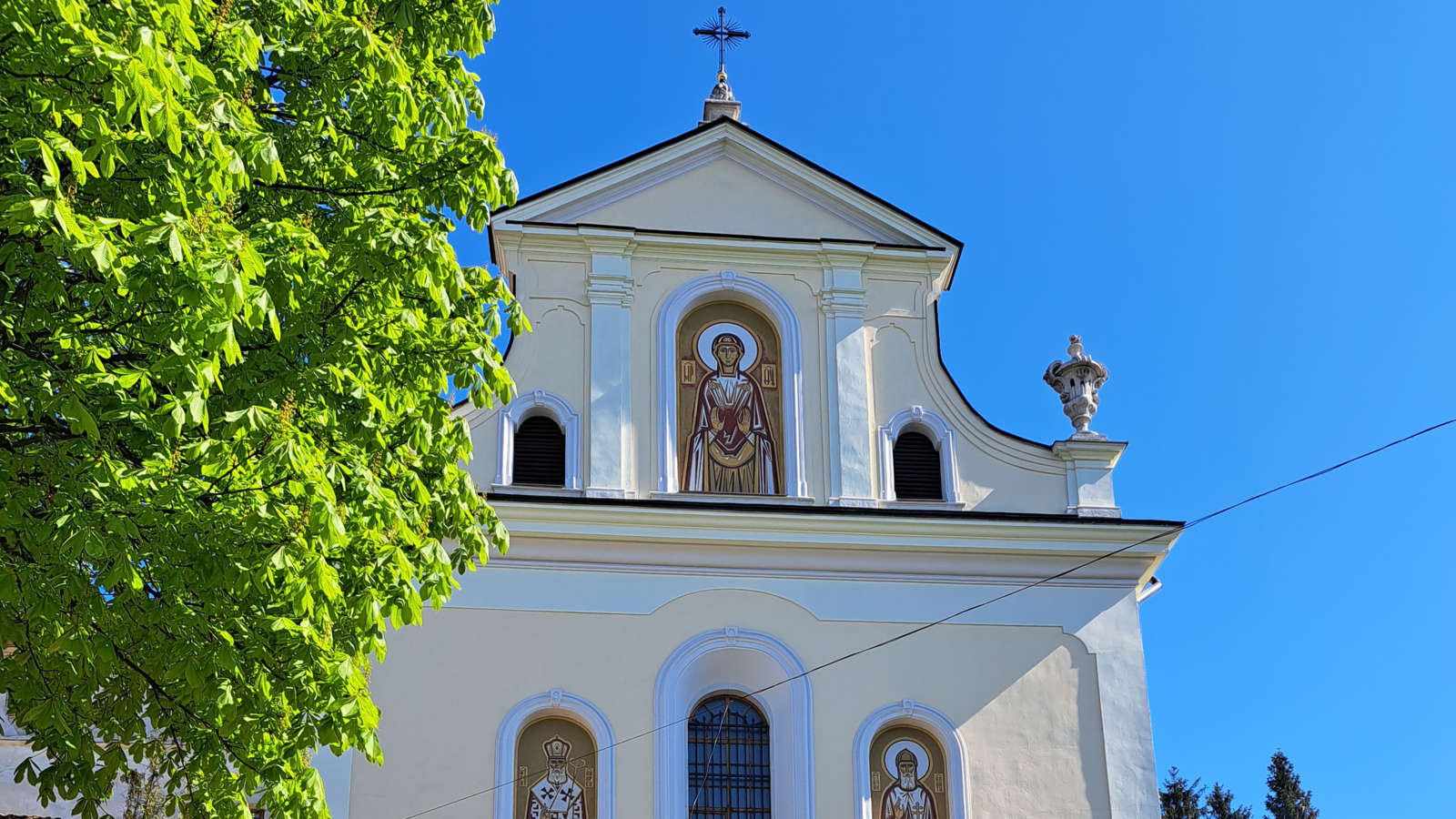The museum for people in wheelchairs is challenging to visit:
- you can only enter the gate and the street territory of the museum;
- it is pretty difficult to move around the territory in a wheelchair without outside help: the height difference, the paths are paved with rough and bumpy cobblestones;
- the palace and all museum premises are inaccessible, you can only enter the inner courtyard, and it is impossible to enter the castle;
- toilets are also inaccessible to people in wheelchairs.
Description

Transcarpathian Museum of Regional History, named after Tyvodar Lehotsky, is a local history museum in the city of Uzhhorod, the largest collection of historical, ethnographic, and cultural monuments in the whole of Ukrainian Transcarpathia, located in the premises of the Uzhgorod Castle.
History of Uzhgorod Castle
Today we will tell you about the ancient fortress - Uzhgorod Castle. It is located at the very top of Zamkova Gora and proudly rises above the historical heart of Uzhhorod. This is one of the Transcarpathian region's most valuable military historical buildings. The castle is built on the edge of a steep slope, so one of its walls rises above the abyss. The northern part of the building is located on such a steep slope that the enemy never tried to attack the fortress from this side. The thickness of the walls reaches 3 meters, and the fortifications are thought out with the meticulousness of a genius. Even if the enemies managed to overcome the strong castle wall, the fortress's defenders could continue their defense. Since the castle served as a hiding place for the aristocracy and numerous townspeople, there are deep casemates under it. You can also see a prison and a torture chamber in the dungeons.
No one can say precisely when it was built. But in the 9th century, written sources already mentioned the castle, although it was not stone, but wooden. The Slavs - white Croats - lived in these regions and created the first fortifications. A little later, at the end of the 9th and the beginning of the 10th century, a wooden fort was built here, which housed the residence of Prince Laborets. However, after the attack of the Hungarians, the fortress was burned down and rebuilt by them after some time. The Uzhhorod castle was a delicacy, and the Hungarian kings gave these lands to their subjects. In 1312, after the Italian Drugeti brothers helped King Charles Robert of the new dynasty of Anjou suppress the revolt of Grand Duke Peter Péteny, Charles Robert presented the brothers with a castle and lands. They owned it for 350 years. The Drugets rebuilt the castle in the 16th century. Italian craftsmen were invited to carry out the construction works, which left a Renaissance influence on the palace's architecture. Strong fortification walls were built.
A popular legend is connected with the period of Druget possession. In the 17th century, Count Druget had a daughter. One of the neighboring governors decided to capture the Uzhhorod Castle and, to find out how to do it, disguised himself as a stranger. Arriving in Uzhhorod, he accidentally met Druget's daughter. They fell in love with each other, and the girl told all the castle's secrets, including the secret passage, which only her family knew about. After learning about this, the father ordered his daughter to be buried alive in the castle wall and the voivode to be executed. Since then, the ghost of a girl (the so-called White Maiden) appears in the castle at midnight, looking for her lover, and disappears with the first roosters.
In the 17th century, the Uzhgorod castle was besieged many times, particularly during numerous peasant revolts and religious confrontations. The last siege of the fortress took place during the national liberation movement of the Habsburgs, which Ferenc Rakoci II led. He became the next owner of the castle.
Then the fortress was managed by Miklós Berčeni, who developed it as the main center of cultural and political life. Thanks to Miklos and his wife, the castle turned into a pompous count's court, the center of the cultural and political life of the region in the late 17th and early 18th centuries. And at the end of the 17th century, the Uzhhorod castle was given to the Uniate Diocese, which founded a theological lyceum here. It existed until the arrival of Soviet power.
The structure was surrounded on three sides by a moat 8-10 meters deep, through which a drawbridge was thrown to the entrance gate. To this day, the openings for the chains, with the help of which the bridge was raised, have been preserved. The thickness of the outer fortress wall reached from 2.5-3 m to a height of 10 meters, and it has been preserved to this day.
The former residential palace of Uzhhorod Castle was located opposite the main entrance gate. It is a strict two-story rectangular building with a square tower at each corner.
On the towers' upper floor, the walls' thickness reaches 2.5-3 m; you can see the dark holes of loopholes. In the fortification system of the castle, the palace, also known as the citadel, occupied a dominant position. It is a two-story building with more than 40 rooms.
The first floor contained storage rooms and storerooms. The owners lived on the second floor, where the largest and most beautiful Knight's Hall was a room for banquets and ceremonial receptions. The guests stayed on the third floor.
Loopholes can still be seen on the lower and upper floors of the building.
Above the entrance to the palace is a bas-relief with four thrushes - part of the family coat of arms of the Counts of Druget. There should be seven of them, which can be seen in all images of the coat of arms of this family. By some miracle, under the Soviet government, the number of blackbirds was reduced to four. To the right of the coat of arms is the inscription Anno Domini 1598, which is the date of the restoration of the castle.
Worthy of attention is the castle chapel, in which the ceiling was painted on a religious theme as early as 1857 by the artist Ferdinand Vydra. There were once casemates in the dungeons of the fortress, and now there is a tasting room. You can try all types of Transcarpathian wines and immerse yourself in the Middle Ages.
The tasting room is not accessible for people with reduced mobility.
Unfortunately, only the foundation of the church of St. Yuriy, which was built in the 14th century. In 1728, there was an intense fire, resulting in the church burning down.
The inner courtyard of the castle is decorated not only with a garden but also with mythical statues. First of all, the sculpture of the ancient Greek hero Hercules, which depicts the victory of Hercules over the Lernaean Hydra, catches the eye.
The remains of the bronze fountain were also moved to the castle yard. This is a bronze copy of "Resting Hermes" by the ancient Greek sculptor Lysippus. The Romans identified Hermes with Mercury.
In the courtyard of the castle, in the winter of 2012, a bust of Count Miklós Berčena was installed, and on November 8, 2013, a statue of his wife, Countess Christina Czak. The family-owned the castle for 13 years.
The palace's secrets usually attract tourists - the castle's walls hide the entire system of secret passages. It is said that one of the underground passages leads to the Nevytskyi Castle - a half-ruined fortress located 10 km from the museum. It is believed that there is even a secret archive that contains plans of underground passages and wells of the Uzhgorod Castle.
So, on the premises of the Uzhhorod castle, there is a Transcarpathian Museum of Local Lore named after Tyvodar Legotsky. Today, his collection is 110,000 items of preservation. The exhibits of the leading fund of the Transcarpathian Museum of Local History are grouped into 13 groups in thirty halls.
Attention: all the museum interiors described below are inaccessible to wheelchair users and people with limited mobility. There is no audio description of the museum exhibits either.
The natural and ethnographic collections of the former Uzhhorod Zemstvo Museum are considered the basis of the Transcarpathian Museum of Local Lore. In Transcarpathia, the museum business was founded by Count Shenborn's lawyer - Tyvodar Legotskyi (1830-1915). After the end of the Second World War, in 1947, the museum's collection was located in the Uzhhorod Castle, where it remains.
On the first floor, the nature department presents the physical and geographical characteristics of the Transcarpathian region and data on flora and fauna using artistic dioramas.
There are many valuable exhibits in the funds and expositions of natural history nature. This includes, in particular, a fossilized skeleton of a tuna fish, which is about 36 million years old, fossilized remains of sea urchins, mollusks, bones and teeth of a mammoth, a cave bear, a giant deer, a bison, one of the largest collections of stuffed animals in Ukraine birds and animals, numerous herbarium collections, etc.
The museum is also noted for its numerous collection of cold and firearms. It consists of 269 samples stored in museum funds from 18 world countries. The collection covers the period from the 13th century. To the second floor, 20th century It, is based on samples of cold and firearms, which were transferred from the former Tyvod Legotsky Museum in Mukachevo.
The saber of the Transylvanian prince and Polish king István Báthory (1576) is especially valuable. Her silver hilt is bejeweled with the monogram "S.B." and features Istvan Bathory. On the blade is the inscription in gold letters in Latin: "S.B. Rex Hun. et Pol." - "István Báthory - King of Hungary and Poland", "Pro Deo et Patria" - "For God and the Motherland".
Only some museums can boast of such a collection of manuscript books and old prints that belong to the museum's funds. We will mention only the most valuable editions: "Royal Gospel" of 1401, "Mukachevo Psalter" of the 15th century, "Russian Bible" of 1519 by Francis Skoryna, "Ostrozka Bible" of 1581 by Ivan Fedorov, a large number of old prints of the 17th-18th centuries.
On the second floor, you can familiarize yourself with the history of the city and, first of all, the history of the Uzhgorod castle, as well as the history of religion and the development of the spiritual culture of the region using the examples of physical exhibits, ancient and rare books and furniture from the 17th to the beginning of the 20th centuries.
In 2009, another exhibition was solemnly opened - "Transcarpathia between the two world wars", which covers 1914-1938, where more than three hundred original documentary and object exhibits are presented, highlighting the conditions for the creation of Carpathian Ukraine. The next exhibition is dedicated to the Carpathian Ukraine itself, and nearby is a memorial room museum of a prominent cultural and statesman - Augustyn Voloshyn. Unique collections of the Department of Folk Art and Ethnography are represented by the thematic exhibitions "Folk Clothing of Transcarpathia" and "Folk Musical Instruments of Transcarpathia".
You can have lunch in the Uzhgorod Castle restaurant and drink coffee on the restaurant's summer terrace while watching the knight tournament.
Address, contacts
Uzhhorod, st. Chapter 33


